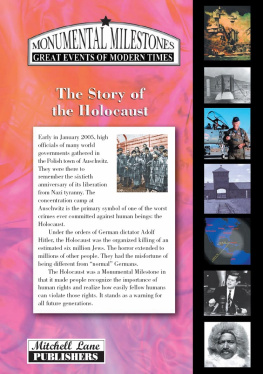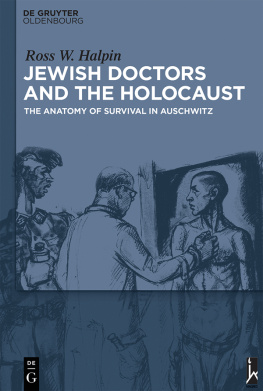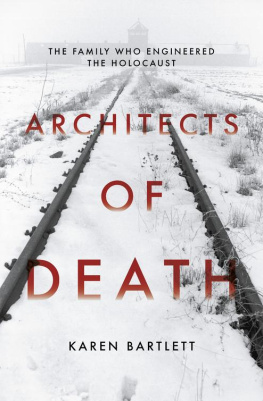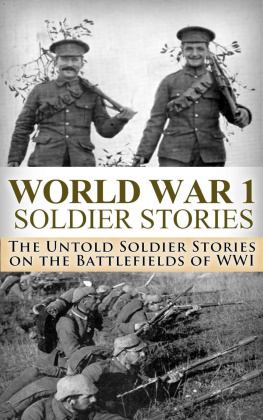Auschwitz & The Holocaust
The Shocking Stories of Commandant & Leaders of the Holocaust & Auschwitz
All Rights Reserved. No part of this publication may be reproduced in any form or by any means, including scanning, photocopying, or otherwise without prior written permission of the copyright holder. Copyright 2015
Disclaimer Notice:
Please note the information contained within this document is for educational purposes only.
Every attempt has been made to provide accurate, up to date and reliable complete information no warranties of any kind are expressed or implied. Readers acknowledge that the author is not engaging in rendering legal, financial or professional advice.
By reading any document, the reader agrees that under no circumstances are we responsible for any losses, direct or indirect, which are incurred as a result of use of the information contained within this document, including but not limited to errors, omissions, or inaccuracies.
Table of Contents
Introduction
Chapter 1: Hss
Chapter 2: A short chapter for the short life of Erich Mhsfeldt
Chapter 3: Amon Goeth
Chapter Four: Justice Delayed
Conclusion
LIMITED TIME BONUS MATERIAL: Next Stop Success Free Package
Introduction
Thank you for downloading this book, Auschwitz and the Holocaust: The Shocking Stories of Commandant & Leaders of the Holocaust & Auschwitz.
Germany will pay a heavy penance for this mass murder of the Jews. These were the last words of a Jewish victim in Auschwitz, said to the face of the commandant of the camp, Rudolf Hss.


The pictures above show Berlin and the eastern German city of Dresden. These are just two of the larger cities of the nation that were absolutely flattened during the war. Every major city went up in flames. Most secondary cities were as well. To a degree, the Germans paid a price for starting the war and for the brutal murder of millions during the Holocaust and its occupation of Europe. In terms of just of raw numbers, however, German losses were far below those inflicted upon those whom the Germans occupied and captured.
Comparing suffering is a dangerous historical game. After the war, many Germans, brainwashed by twelve years of constant propaganda were not fully aware of the suffering of those conquered by the Nazis. They believed they were suffering unduly at the hands of the Allies. After the occupation forces moved in, the Nuremberg War Crimes Trials began. The Allies press reported on the damage inflicted by German forces and in the camps. It was then that many in Germany began to see the war in a different light.
The bombing of German cities and the occupation of the country were the logical outcomes of Germany's war of aggression and war crimes. In the years since the end of the war, many historians, Jewish and non-Jewish alike, have felt that the Allies could have done more to save the Jews of Europe from the fate that awaited them in Auschwitz and the other death camps. To a degree this is true.
However, it is the belief of Jenkins that the bombing of railroads, perhaps even the camp itself would not have stopped the killing and it may only have slowed it down temporarily. Though the Nazis built the extermination camps as a way to avoid the psychological toll of close up mass killing by bullets. The Einsatzgruppen (Special Action Squads) had killed roughly 1.5 million people in Poland, the Baltic countries, and the Soviet Union by pulling triggers; they would have simply have done it again.
Advocates of the high altitude bombing of the camps also forget the incredible inaccuracy of WWII bombing. The effectiveness of the bombing of German cities came because it entailed the indiscriminate bombing of large geographical areas. Despite everything else the Allies could have done; the most effective way to end the Holocaust was to defeat Germany.
This short volume is an introduction to the lives and mindset of some of the most evil and unfeeling people history has ever seen. Chapters, paragraphs, and sentences used to describe the mindset, outlook, and rationale of the Holocaust perpetrators within this book is not in any way to illustrate a sympathetic understanding of the personalities involved. It is an illustration of how an individual finds or intentionally enrolls himself in a system whose sole purpose is the mass murder of other human beings.
The author and the publisher of this book assumes that the reader will have a basic understanding of the history of the rise of the Nazi Party, the role of anti-Semitism in the Nazi Party and in German history, especially in the post-WWI years. There is also an assumption on the part of the author that the progression of anti-Semitic behavior and legislation in pre-WWII Germany is familiar to the reader and that the reader has a basic understanding of the events and milestones that led to the determination and execution of the Nazis' Final Solution of the Jewish Problem in Europe. For those readers who wish to either refresh their memory, or to learn about these events for the first time, we would like to recommend the volumes in this series that relate to the Holocaust. These can be found with a simple search on Amazon for the obvious keywords.
This volume will concentrate on the lives, actions, thoughts, and memories of those men who were near the top of the Nazi hierarchy or key figures within the Holocaust machinery. A basic knowledge of the Holocaust and the events surrounding it is assumed.
Lastly, as with the other volumes in this series that deal with the Final Solution in Europe, the author wishes to convey that neither the information and/or description of events, whether in narrative form or from the direct quotation of a war criminals' testimony, is meant in any way as an excuse, endorsement, or justification of some of the most tragic events in recorded history. It cannot be excused, never endorsed, and never justified, except by those with the same soul-sickness which enveloped too many of those in Germany and Europe in the years 1933-45.
Please feel free to share this book with your friends and family. Please also take the time to write a short review on Amazon to share your thoughts.
Chapter 1: Hss
At the war crimes trials and in prison after World War II, former Auschwitz commandant Rudolf Hss testified and wrote about his role in the establishment of the death camp at Auschwitz-Birkenau and his role in the machinery of death there.
I was ordered to establish extermination facilities at Auschwitz in 6/1941...I visited Treblinka to find out how they carried out their exterminations. The camp commandant at Treblinka told me that he had liquidated 80,000 in the course of one-half year. He was principally concerned with liquidating all the Jews from the Warsaw Ghetto. He used monoxide gas, and I did not think that his methods were very efficient. So when I set up the extermination building at Auschwitz, I used Zyklon B, which was a crystallized prussic acid which we dropped into the death chamber from a small opening. It took from 3-15 minutes to kill the people in the death chamber, depending upon climatic conditions. We knew when the people were dead because their screaming stopped. We usually waited about one-half hour before we opened the doors and removed the bodies. After the bodies were removed our special Kommandos took off the rings and extracted the gold from the teeth of the corpses... Another improvement (author's italics) we made over Treblinka was that we built our gas chamber to accommodate 2000 people at one time whereas at Treblinka their 10 gas chambers only accommodated 200 people each.

















